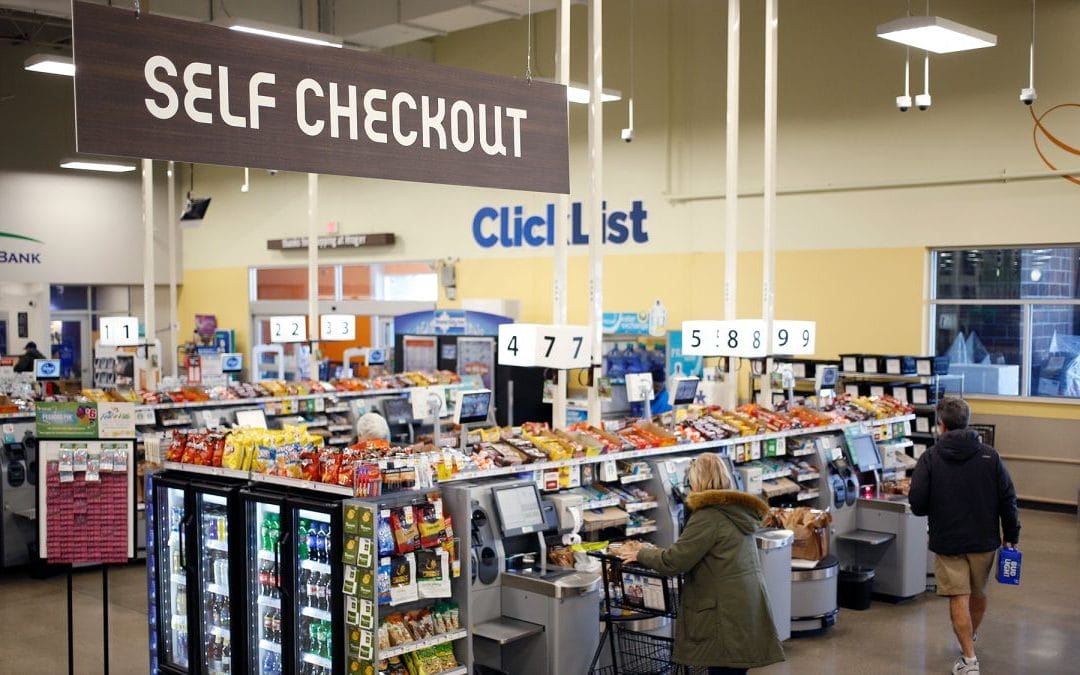The following is the first article in a 3-part series called “Attention Shoppers… The Competitive Strategy Approach to Addressing the Elephant in the Room of the Retail Crisis: The Customer Experience”
The news about retail challenges is getting hard to ignore.
This is evidenced by recent store closure announcements from major retail chains across the country and the world. Among the top reasons cited? Declines in revenues/profit caused by unprecedented losses due to theft or “shrinkage.”
As many as 3,200 U.S. stores have recently closed or announced plans to close stores in the near future, citing $112 billion in retail losses in 2022. They include:
- Bath & Body Works
- Bed Bath & Beyond
- Best Buy
- Foot Locker
- Macy’s
- Nordstrom
- Rite Aid
- Target
- Whole Foods
Self-checkout has been cited by many as one of the culprits behind the increases in theft leading to closures. Target, Costco and Walmart have all pointed squarely at self-checkout as one of the reasons for increased shrinkage. But, was this a self-inflicted wound from the rush to the promised cost savings of self checkout?
A Blessing and a Curse
The technology has been help and a hindrance for retail. It allows for labor savings but also makes theft easier – either intentionally or by customer error.
Despite the down-sides, many retailers are not giving up on the technology. In fact, the market for self-checkout technology is only looking up.
In 2020, the global self-checkout systems market was valued at $3.5 billion. By 2027, the global self-checkout systems market is expected to reach $7.3 billion. Customers aren’t giving up either. While 39 percent of shoppers report using both self-checkout and manned checkout, retailers actually consider this ratio ideal.
The “Blessing”
Despite some problems with self-checkout, 85 percent of consumers report using the technology at least once. Some of the benefits include:
Quicker transactions: customers can scan and pay without having to wait in line for a cashier.
Reduced labor costs: retailers can reduce labor costs and free up employees to focus on other tasks.
Increased sales: despite some revenue drawbacks, self-checkout can help retailers increase sales with targeted advertising and product recommendations at point-of-sale.
Improved data collection: collect valuable data about customer behavior, product preferences and how customers are interacting with the technology to guide improvements.
The “Curse”
We are not surprised to find that retail theft increased with the rollout of self-service technology. Some industry watchers estimate self-checkout theft costs retailers globally $35 billion annually.
It makes sense: When customers are responsible for scanning their own items, it can be easier for them to conceal items, mis-scan items or fail to scan items and place them in their bags anyway.
Other drawbacks:
High upfront costs: installing and maintaining self-checkout kiosks.
Job losses: some retailers may decide to cut costs by cutting staff.
Customer confusion: especially for older shoppers and those with disabilities. Plus, self checkout shoppers naturally take more time to scan and bag items, and are prone to using more bags than a trained cashier may use to bag items (an added cost).
Customer dissatisfaction: technical errors, interaction with poorly trained staff, extra work for the customer yet at the same price as standard checkout, and in grocery, looking up fresh produce.
The Mitigating Factor
We’re seeing one common denominator underlying the myriad issues contributing to retail troubles – whether theft, staffing or sales losses: the customer experience.
Self-checkout technology is steadily improving, and is likely not going anywhere. We believe some middle ground will be found which protects the retailer’s revenues, preserves jobs and – perhaps most importantly – keeps customers satisfied. Here are 8 tips to help mitigate some of the drawbacks of self-checkout and keep customers satisfied.
1 — Try before you buy. Lease or rent self-checkout kiosks instead of purchasing them outright. This “test” can be announced to get customer insights and promote the retailers’ interest in customer satisfaction.
2 — Protect inventory. Invest in security devices that are constantly monitored by staff.
3 — Improve human contact. Even if customers are using self-checkout, keep sufficient, appropriately trained staff nearby and available to help customers or answer questions. Too often you’ll find staff monitoring 6 or more self-checkout stations. We believe this is taking staff reduction too far.
4 — Make it easy. Provide clear written, audio AND ILLUSTRATED instructions on how to use self-checkout. Also, choose systems that are intuitive and easy for customers of all ages and abilities.
5 — Do your part. Make a habit of regularly scheduled testing and maintenance of self-checkout kiosks. Also, collect customer opinions at regular intervals.
6 — Provide true options. Too often retailers retain standard checkout, but have so few that the lines are very long. In effect, the customer has no good choice and this is a negative for the customers who like self-checkout and those who don’t. In other words: Lose-lose-lose.
7 — Use with care. Limit self-checkout to situations where item counts are relatively low.
8 — When in doubt, check it out. Self-checkout is not for everyone. It may turn out that full-service checkout is most beneficial to the retailer’s bottom line and, crucially, the customer experience.
In the end, success requires that those who like self-checkout and those who don’t both leave the store happy.
Whether retailers decide to scale back, increase or hold out on self-checkout, they should carefully consider all factors which affect the operation – especially the customer experience.
The goal is profit improvement. While labor savings is one element, the larger and ever present necessity is to deliver an experience the customer wants to repeat.
D&Co. Senior Associate Mark Bogomolny contributed to this article.

